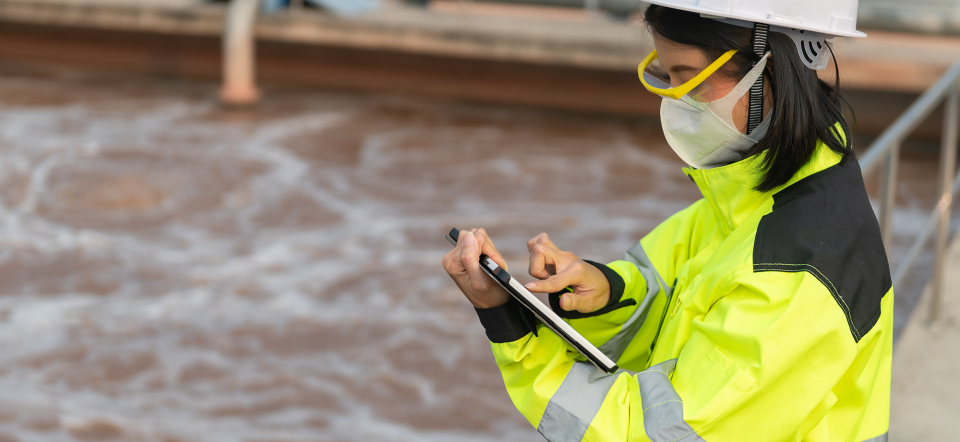Antimicrobial resistance (AMR) is one of the most serious health threats of our time. Researchers in the Nordic region are currently working to find solutions to avoid the consequences that antimicrobial resistance can have on societal security in the Nordic region.
Adriana Krolicka from NORCE Norwegian Research Centre is leading the project Wastewater Treatment plants as a trusted Source of Timely information on antimicrobial resistance threat (TruSTme), which has investigated how wastewater treatment plants can be a reliable source of timely information on antimicrobial resistance.
"There is great awareness that we are facing a potential public safety crisis when it comes to AMR. In our project, we focus on wastewater treatment plants because wastewater can be a source of important knowledge about AMR and human pathogens. During the COVID pandemic, wastewater samples from wastewater treatment plants were used to analyse the level of infection in the population, and we can do the same with AMR," she says.
Wastewater treatment plants can be seen as large sinks that collect antimicrobials that are used as medicines and are excreted into the sewer networks connected to the treatment plants. Treatment plants thus become hotspots for antimicrobial resistance genes.
When you analyse wastewater at a treatment plant that comes from a large area with many households, it is not possible to see which house the infection comes from. But you can inform the people who can benefit from the information. This could be healthcare professionals who can get an overview of what kind of resistance exists in the area.
"It's about strengthening the next pandemic preparedness. If society has the resilience that we are trying to contribute to with the project's results, we will be stronger if an AMR crisis breaks out. It will be crucial that we can tell from wastewater samples at an early stage that something is going on that the authorities need to be aware of. By regularly monitoring wastewater samples, we can be one step ahead. As soon as we have an identification that a disease outbreak is coming, authorities have time to prepare."

New EU directive will ensure regular monitoring of wastewater
Adriana Krolicka emphasises that it is important to better coordinate wastewater monitoring efforts at both national and Nordic level. Although Finland, Denmark, Sweden and Norway have many things in common, the approach to wastewater monitoring is very different from one country to another.
A new EU Urban Wastewater Treatment directive is coming soon to ensure that all member states regularly monitor untreated and treated (or semi-treated) wastewater. Although Norway and Iceland are outside the EU, the law will also apply there. Krolicka welcomes the new EU directive and believes that regular monitoring of wastewater is the right way to go.
“Wastewater treatment plants (WWTPs) commonly discharge treated (or semi- treated) wastewater into seas or other water bodies. While treated effluent is generally not visibly "polluted," it can still contain residual antimicrobial resistance genes and pathogens. If not treated to a sufficiently high standard, these genes and pathogens can negatively impact aquatic ecosystems and human health. The level of wastewater treatment and discharge practices varies among Nordic countries,” says Krolicka.
Historically, many Norwegian wastewater treatment plants, particularly older ones, primarily provided mechanical and biological treatment (often referred to as two stages). While significant upgrades have occurred, the implementation of advanced treatment, has been slower in some areas compared to other Nordic countries.
“Sweden and Finland have generally implemented high standards for wastewater treatment, including widespread use of tertiary treatment. Both Sweden and Finland are considered leaders in urban wastewater treatment within Europe. Although Denmark also has very advanced treatment systems,” says Krolicka.
With the upcoming EU directive to ensure regular monitoring of wastewater, a potential AMR outbreak will also be detected at an early stage, Krolicka adds. For this reason, the project also addressed the need to monitor untreated and treated or semi-treated wastewater for AMR and human pathogens by developing a prototype of a relatively simple set of robust early warning tools that can be used not in a large laboratory but on-site at wastewater treatment plants.
Read more about the project: Wastewater Treatment plants as a trusted Source of Timely information on antimicrobial resistance threat (TruSTme)
The project has written a policy paper, which is published in this report from NordForsk: Fast Track to Vision 2030 | NordForsk


